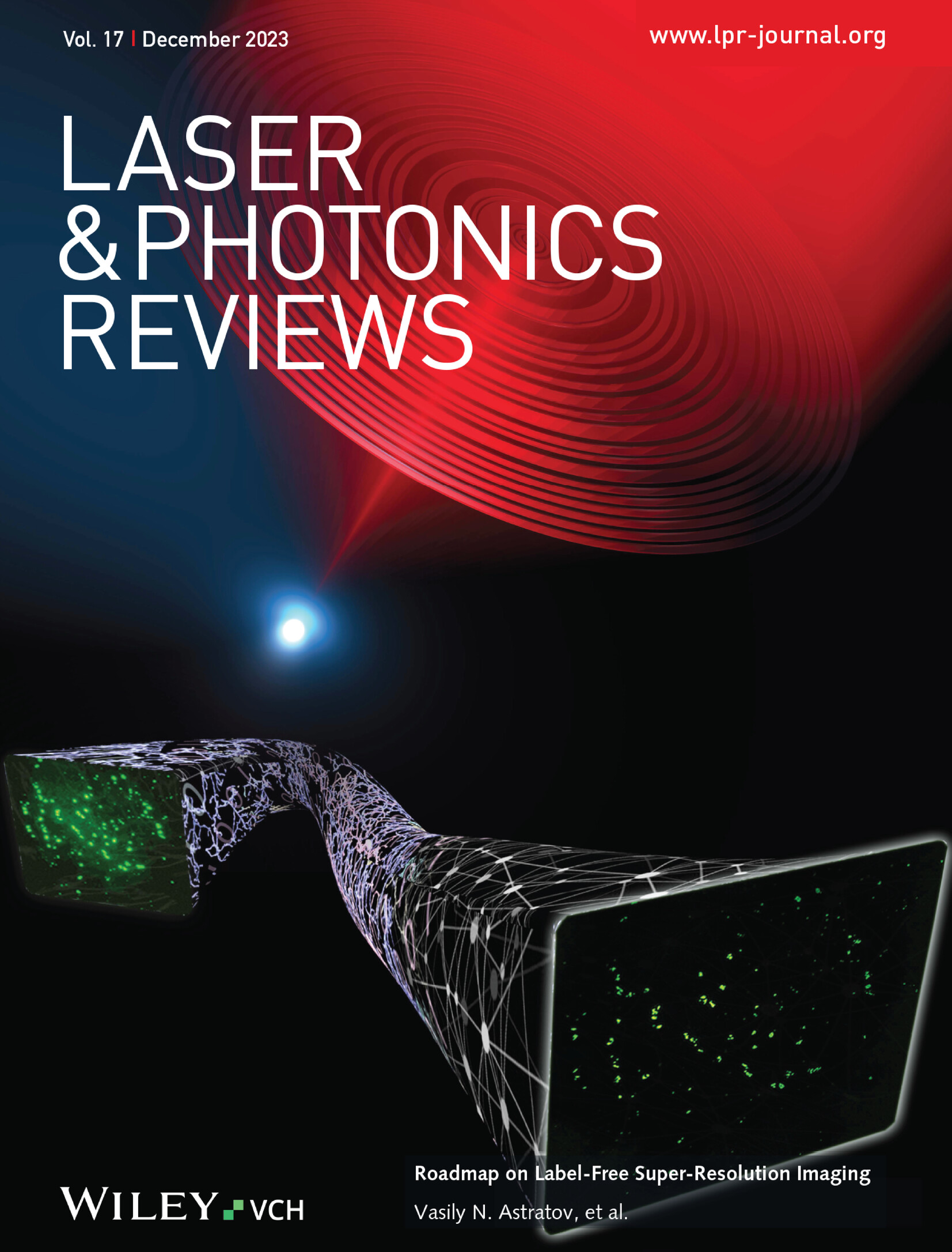用于高性能绿色led的Mg2+掺杂无铅Cs3Cu2Cl5纳米晶体的可扩展露天合成
IF 9.8
1区 物理与天体物理
Q1 OPTICS
引用次数: 0
摘要
Cs3Cu2Cl5纳米晶体(NCs)由于其高效的自捕获激子(STE)发射而成为一种有前途的光电材料。然而,它们有限的环境稳定性极大地限制了它们在发光二极管(led)中的应用。在这项工作中,开发了一种简便的环境空气合成策略,用于Mg2 +掺杂Cs3Cu2Cl5 NCs,同时解决了稳定性和发射效率的挑战。值得注意的是,最佳Mg2 +掺杂(20%)将光致发光量子产率(PLQY)从28.69%提高到59.3%。通过态密度(DOS)计算和从头算分子动力学(AIMD)模拟进行的综合理论研究表明,Mg2 +掺杂导致带隙缩小,增强了辐射复合,同时增强了晶格稳定性。当与UV LED芯片集成时,优化的nc可以制造出高性能绿色LED,具有出色的亮度(17 281 cd m−2)和出色的颜色稳定性(CIE坐标:0.354,0.518)。该研究不仅为稳定的卤化铜NCs的合成提供了一种实用的方法,而且为设计用于光电应用的高效STE发射器提供了宝贵的见解。本文章由计算机程序翻译,如有差异,请以英文原文为准。
Scalable Open‐Air Synthesis of Mg2+‐Doped Lead‐Free Cs3Cu2Cl5 Nanocrystals for High‐Performance Green LEDs
Cs3 Cu2 Cl5 nanocrystals (NCs) have emerged as promising optoelectronic materials owing to their efficient self‐trapped exciton (STE) emission. However, their limited environmental stability has significantly constrained their application in light‐emitting diodes (LEDs). In this work, a facile ambient‐air synthesis strategy is developed for Mg2 ⁺‐doped Cs3 Cu2 Cl5 NCs that simultaneously addresses both stability and emission efficiency challenges. Remarkably, optimal Mg2 ⁺ doping (20%) enhances the photoluminescence quantum yield (PLQY) from 28.69% to 59.3%. Comprehensive theoretical investigations through density of states (DOS) calculations and ab initio molecular dynamics (AIMD) simulations demonstrate that Mg2 ⁺ doping induces bandgap narrowing for enhanced radiative recombination while reinforcing the crystal lattice stability. When integrated with a UV LED chip, the optimized NCs enable the fabrication of high‐performance green LEDs exhibiting outstanding luminance (17 281 cd m− 2 ) and excellent color stability (CIE coordinates: 0.354, 0.518). This study provides not only a practical synthetic approach for stable copper halide NCs but also valuable insights for designing efficient STE emitters for optoelectronic applications.
求助全文
通过发布文献求助,成功后即可免费获取论文全文。
去求助
来源期刊
CiteScore
14.20
自引率
5.50%
发文量
314
审稿时长
2 months
期刊介绍:
Laser & Photonics Reviews is a reputable journal that publishes high-quality Reviews, original Research Articles, and Perspectives in the field of photonics and optics. It covers both theoretical and experimental aspects, including recent groundbreaking research, specific advancements, and innovative applications.
As evidence of its impact and recognition, Laser & Photonics Reviews boasts a remarkable 2022 Impact Factor of 11.0, according to the Journal Citation Reports from Clarivate Analytics (2023). Moreover, it holds impressive rankings in the InCites Journal Citation Reports: in 2021, it was ranked 6th out of 101 in the field of Optics, 15th out of 161 in Applied Physics, and 12th out of 69 in Condensed Matter Physics.
The journal uses the ISSN numbers 1863-8880 for print and 1863-8899 for online publications.

 求助内容:
求助内容: 应助结果提醒方式:
应助结果提醒方式:


